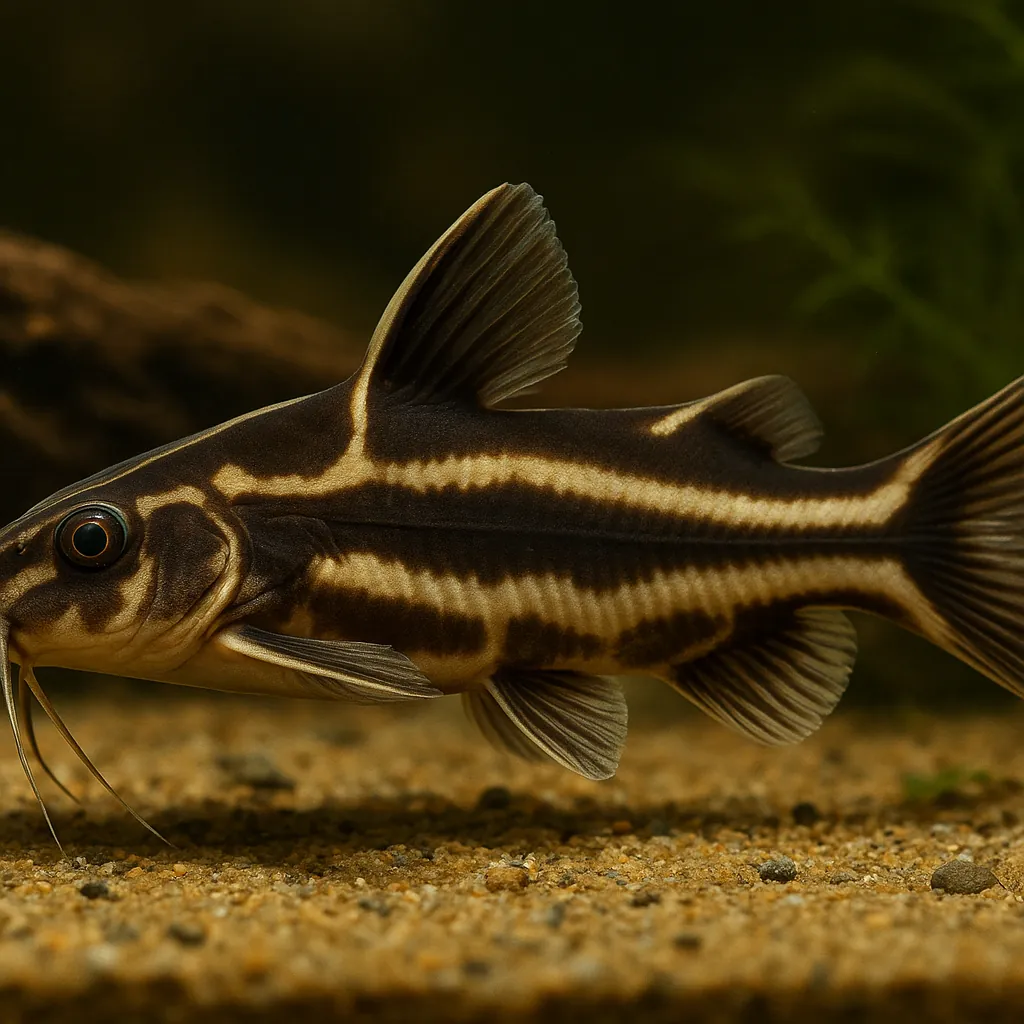
Striped raphael catfish
Introduction
The Striped Raphael Catfish (Platydoras armatulus), also known as the Talking Catfish or Chocolate Doradid, is a popular choice among aquarists due to its striking appearance and peaceful nature. Characterized by bold black and white stripes running along its body, this nocturnal species adds a unique charm to freshwater aquariums. Its hardy disposition and relatively easy care requirements make it suitable for both beginner and intermediate fishkeepers.
What makes the Striped Raphael Catfish a popular choice for aquarists?
Its distinctive striped pattern, peaceful temperament, and hardiness appeal to many fish enthusiasts.
Is the Striped Raphael Catfish suitable for beginners?
Yes, its resilience and straightforward care needs make it an excellent option for novice aquarists.
Care and Environment
Providing optimal care for the Striped Raphael Catfish involves replicating its natural habitat and meeting its specific needs.
What is the minimum tank size for a Striped Raphael Catfish?
A minimum tank size of 114 liters is recommended to accommodate a single fish comfortably.
What are the ideal water parameters for this species?
Maintain a temperature between 24–27°C, a pH of 6.0–7.5, and water hardness of 2–12 dGH.
How should the tank be decorated to suit the Striped Raphael Catfish?
Incorporate a soft, sandy substrate to facilitate their burrowing behavior. Provide ample hiding spots using driftwood, caves, and dense vegetation to mimic their natural environment and offer security.
What type of filtration and lighting is best?
Use efficient filtration to maintain water quality, ensuring gentle water flow to avoid stressing the fish. Opt for dim or subdued lighting to accommodate their nocturnal nature.
What should their diet consist of?
As omnivores, they thrive on a varied diet, including high-quality sinking pellets, live or frozen foods like bloodworms and brine shrimp, and occasional vegetable matter. Feeding should be done in the evening to align with their nocturnal activity.
Are there any specific challenges in keeping this species?
They are generally hardy but can be sensitive to poor water quality. Regular maintenance and monitoring are essential to prevent health issues.
Origin and Habitat
The Striped Raphael Catfish is native to South America's Amazon, Paraguay–Paraná, and lower Orinoco river basins. They inhabit slow-moving rivers, streams, and flooded forests with muddy or sandy substrates and dense vegetation. These environments provide ample hiding spots and a rich supply of food sources, aligning with their nocturnal and burrowing behaviors.
Where can the Striped Raphael Catfish be found in the wild?
They are distributed across the Amazon, Paraguay–Paraná, and lower Orinoco river basins in South America.
What type of environments do they prefer?
They favor slow-moving waters with soft substrates and abundant vegetation, offering both shelter and feeding opportunities.
Temperament and Compatibility
Striped Raphael Catfish are peaceful and generally non-aggressive, making them suitable for community tanks. However, they are nocturnal and may be shy during daylight hours.
Can they be kept with other fish?
Yes, they coexist well with similarly sized, peaceful species. Avoid housing them with very small fish that could be seen as prey.
Do they require companions of their own species?
While they can be kept singly, they may exhibit more natural behaviors when housed with conspecifics or other non-aggressive bottom dwellers.
Are they territorial?
They are not particularly territorial but appreciate having their own hiding spots within the tank.
Interesting Facts
Beyond their care requirements, Striped Raphael Catfish possess several intriguing traits:
- They are known as "Talking Catfish" due to their ability to produce sounds by moving their pectoral fins, often heard during handling or when stressed.
- Their bodies are armored with bony plates, providing protection against predators.
- They have a slow growth rate, typically reaching full size over several years.
Why are they called "Talking Catfish"?
They produce audible sounds by rubbing their pectoral fins against their body, a behavior observed during stress or handling.
How do they protect themselves from predators?
Their bodies are covered with bony plates, offering a natural defense mechanism.
Sources
All information in this article has been gathered from the following reputable sources:
Overview
Recommended Tank Size 49.9 Gallons (for groups of 3 or more) |
Minimum Group Size 1 |
Minimum Tank Volume 30.1 Gallons |
Maximum Adult Length 7.9 inches |
Average Adult Length 6.7 inches |
Shoaling (6+ required) No |
Preferred Water Type Freshwater, soft, acidic to neutral |
Temperature Range (°C) 24–27 |
pH Range 6.0–7.5 |
Water Hardness (dGH) 2–12 |
Typical Lifespan (years) 10 years |